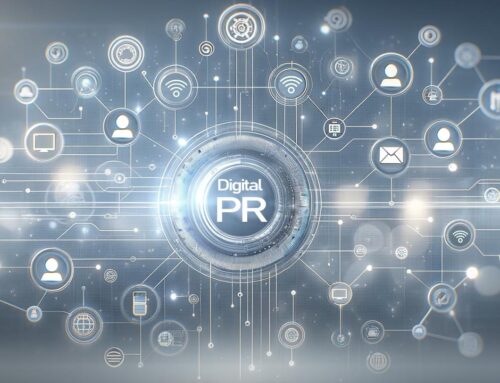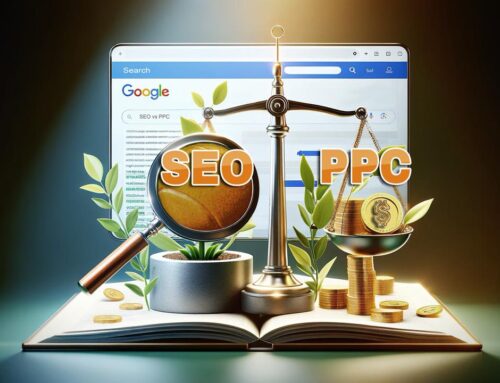Google Ads is a powerful platform for businesses to reach potential customers and drive traffic to their websites. With the right strategy, you can create effective ads that lead to conversions and sales. One innovative way to boost your Google Ads performance is by leveraging ChatGPT-4, an advanced AI model developed by OpenAI. In this article, we’ll discuss how ChatGPT-4 can help you create high-performing Google Ads campaigns.
Table of Contents
Overview of ChatGPT-4
What is ChatGPT-4?
ChatGPT-4 is an AI language model developed by OpenAI. It is based on the GPT-4 architecture, which allows the model to understand and generate human-like text. This cutting-edge technology enables users to:
- Generate content
- Blog posts
- Social media updates
- Advertisements
- Automate tasks
- Customer support
- Content moderation
- Translation
- Enhance creativity
- Brainstorm ideas
- Write stories
- Develop concepts
Benefits of using ChatGPT-4 for Google Ads
Using ChatGPT-4 in your Google Ads campaigns offers several advantages:
- Time-saving: Automate ad copy creation and reduce the time spent on brainstorming and writing.
- Cost-effective: Lower your expenses by minimizing the need for in-house copywriters or outsourcing.
- Consistency: Maintain a consistent tone and style across your ads, leading to better brand recognition.
- Optimization: Quickly generate multiple ad variations to test and optimize for the best performance.
Setting up ChatGPT-4 for Google Ads
Prerequisites
Before you start using ChatGPT-4 for your Google Ads, ensure you have the following:
- Access to ChatGPT-4 API
- Google Ads account
- Basic knowledge of Google Ads and ChatGPT-4 integration
Integration steps
- Authenticate with ChatGPT-4 API: Obtain your API key from the OpenAI developer portal and configure it in your application.
- Create a project: Start a new project in your Google Ads account or select an existing one to integrate with ChatGPT-4.
- Set up ad groups: Organize your ads into ad groups based on your target keywords and audience.
- Create ad templates: Develop ad templates with placeholders for the headlines, descriptions, and display URLs.
- Connect your ad templates to ChatGPT-4: Use the API to send ad templates to ChatGPT-4 and receive generated ad copy.
Tips for Generating Effective Ads with ChatGPT-4
Define your goals
Before generating ads with ChatGPT-4, it’s crucial to have a clear understanding of your campaign goals. This will help you provide the right input to the AI model and generate ads that align with your objectives. Some common campaign goals include:
- Increasing website traffic
- Boosting sales or conversions
- Raising brand awareness
- Promoting a specific product or service
Use specific prompts
When sending prompts to ChatGPT-4, be as specific as possible to ensure the generated ads are relevant and effective. Include important details such as:
- Target keywords
- Unique selling points (USPs)
- Call-to-action (CTA)
- Tone and style
Keyword Research and Keyword Selection
A crucial aspect of creating successful Google Ads campaigns is conducting thorough keyword research and selecting the right keywords to target. This ensures that your ads reach the right audience and drive relevant traffic to your website. In this section, we will discuss the importance of keyword research, the process of keyword selection, and how ChatGPT-4 can assist you in this vital task.
Importance of Keyword Research
Effective keyword research helps you:
- Understand your target audience’s search behavior
- Discover new marketing opportunities
- Create relevant and engaging ad copy
- Optimize your ad budget by targeting high-converting keywords
- Stay ahead of your competition by discovering niche keywords
Keyword Selection Process
- Brainstorm: Start by listing potential keywords relevant to your business, products, or services. Think about what your target audience might search for when looking for solutions that you provide.
- Use keyword research tools: Leverage tools such as Google Ads Keyword Planner, SEMrush, Ahrefs, or Moz Keyword Explorer to generate additional keyword ideas and analyze their search volume, competition, and cost per click (CPC).
- Analyze the competition: Study your competitors’ ads and the keywords they target to identify gaps in the market and potential opportunities.
- Choose keywords based on intent: Categorize your keywords by search intent, such as informational, navigational, transactional, or commercial investigation. Prioritize keywords with high commercial intent for your ad campaigns.
- Select long-tail keywords: Long-tail keywords are longer, more specific phrases that often have lower search volume but higher conversion rates. Targeting long-tail keywords can result in lower CPC and better ad performance.
- Organize keywords into ad groups: Group your keywords by themes or topics to create targeted ad groups. This will help you develop relevant ad copy and landing pages for each group.
How ChatGPT-4 Can Assist in Keyword Research and Selection
ChatGPT-4 can be a valuable asset in your keyword research and selection process. Here’s how:
- Keyword brainstorming: Provide ChatGPT-4 with a brief description of your business, products, or services, and ask it to generate a list of potential keywords. The AI model will use its extensive knowledge to come up with relevant keyword ideas.
- Keyword analysis: ChatGPT-4 can help you analyze keyword data by processing information from keyword research tools. By inputting the data, you can ask the AI to identify high-potential keywords based on search volume, competition, and CPC.
- Keyword categorization: ChatGPT-4 can help you categorize your keywords based on search intent and identify those with high commercial intent.
- Long-tail keyword generation: Provide ChatGPT-4 with seed keywords and ask it to generate long-tail keyword variations. This will help you discover niche opportunities and improve your ad targeting.
- Ad group organization: ChatGPT-4 can help you organize your keywords into relevant ad groups, making it easier to create targeted ads and landing pages.
By incorporating ChatGPT-4 into your keyword research and selection process, you can uncover valuable insights, save time, and improve the effectiveness of your Google Ads campaigns.
How Search Volume Affects Keyword Selection
Search volume plays a critical role in keyword selection for your Google Ads campaigns. It represents the number of times a specific keyword or phrase is searched for within a given timeframe, typically measured on a monthly basis. Understanding the impact of search volume on your keyword selection can help you make informed decisions and optimize your ad campaigns for better performance.
Importance of Search Volume
The search volume of a keyword provides valuable insights into its potential effectiveness in driving traffic and conversions. Here’s why search volume is essential for keyword selection:
- Popularity: High search volume indicates that a keyword is popular and frequently searched for by users. By targeting popular keywords, you can potentially reach a larger audience.
- Relevance: When a keyword has a high search volume, it often signifies that it is relevant to the needs of your target audience. By selecting relevant keywords, you can attract users who are more likely to convert.
- Competition: High search volume keywords tend to have more competition, as multiple advertisers bid on them. This can drive up the cost per click (CPC) and make it more challenging to rank your ads. On the other hand, low search volume keywords might have less competition, providing an opportunity to gain a competitive advantage at a lower cost.
Balancing Search Volume and Competition
When selecting keywords for your Google Ads campaigns, it’s crucial to strike the right balance between search volume and competition. Here are some tips to help you achieve this:
- Focus on high-converting keywords: Prioritize keywords that have a proven track record of driving conversions, even if they have a lower search volume. This will ensure that you’re targeting users who are more likely to convert, maximizing your return on investment (ROI).
- Target long-tail keywords: Long-tail keywords are longer and more specific phrases that usually have lower search volume but higher conversion rates. By targeting these keywords, you can reduce competition and potentially achieve better ad performance.
- Consider keyword seasonality: Some keywords may have fluctuating search volume throughout the year due to seasonal trends. Be sure to account for seasonality in your keyword selection to capitalize on peak periods and avoid wasting ad spend during low-demand times.
- Monitor keyword performance: Continuously track the performance of your targeted keywords, including their search volume, CPC, and conversion rates. This will help you make data-driven decisions and optimize your keyword selection over time.
Adapting Your Strategy Based on Search Volume
Understanding search volume trends and adjusting your keyword selection accordingly can lead to more effective Google Ads campaigns. Here are some strategies to consider:
- Capitalize on emerging trends: Monitor search volume data to identify new trends and emerging keywords in your industry. By targeting these keywords early, you can potentially gain a competitive advantage and reach new audiences.
- Adjust bids based on search volume: Optimize your ad spend by adjusting your keyword bids based on search volume. Increase bids for high search volume keywords with strong conversion potential, and reduce bids for low search volume keywords with low conversion rates.
- Test and refine: Regularly test different keyword combinations and variations to identify the most effective ones. Continuously refine your keyword selection based on performance data and search volume trends.
Train ChatGPT-4 with sample ads
To improve the quality of the generated ads, consider training ChatGPT-4 with examples of successful ads from your past campaigns or those of your competitors. This will help the AI model understand the kind of ads that resonate with your target audience.
Generate multiple ad variations
One of the main benefits of using ChatGPT-4 is the ability to create multiple ad variations quickly. Leverage this capability to generate several ad versions for each ad group, and then:
- A/B test the ads to determine the best performers
- Optimize your ad spend by allocating more budget to high-performing ads
- Continuously refine and iterate on your ad copy to improve campaign performance
Monitor and adjust
It’s essential to keep track of your campaign’s performance and make adjustments as needed. Keep an eye on key metrics such as:
- Click-through rate (CTR)
- Conversion rate
- Cost per click (CPC)
- Return on ad spend (ROAS)
Use these metrics to evaluate the effectiveness of your AI-generated ads and make data-driven decisions to optimize your campaigns.
Potential Pitfalls and How to Avoid Them
Overreliance on AI-generated content
While ChatGPT-4 can generate high-quality ads, it’s crucial not to rely solely on the AI-generated content. Always review and edit the ads before publishing them to ensure they align with your brand message and comply with Google Ads policies.
Inaccurate or irrelevant ad copy
ChatGPT-4 may sometimes produce ad copy that is not entirely accurate or relevant to your campaign. To minimize this issue:
- Be specific with your prompts
- Train the AI model with successful ad examples
- Regularly review and refine the generated ad copy
Losing the human touch
AI-generated content may sometimes lack the human touch or emotional connection that resonates with your audience. To overcome this:
- Edit the ad copy to add a personal touch
- Combine AI-generated content with human creativity
- Test different ad variations to find the most engaging copy
Final Thoughts
By leveraging ChatGPT-4, you can create effective and high-performing Google Ads campaigns that save time, reduce costs, and optimize results. Remember to set clear campaign goals, use specific prompts, and generate multiple ad variations for testing and optimization. It’s also essential to monitor your campaign performance and make data-driven adjustments. With the right strategy and execution, using ChatGPT-4 can help you take your Google Ads to the next level.










